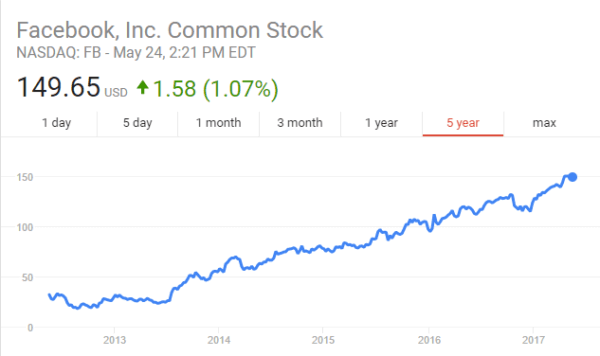CMO audit series, Part 3: Media channels (it’s not what you think)
In part 3 of a series, columnist Scott Rayden takes a look at how ad tech has changed the game for our industry and outlines three core areas that will impact your ability to drive long-term growth from media channels.

There is a big difference, though, in small iterative changes in our industry and giant shifts that completely change the game for companies looking to push growth through media channels. I believe we are going through one of the greatest shifts in performance media of our time.
In this post, we won’t be looking at what channels you’re advertising on and where you should consider optimization or expansion. Instead, we’ll audit your channel philosophy and explain the key to getting ahead.
Let’s start by looking at where media channels have been.
In the early years, it was Inktomi, Overture, Yahoo, MSN and this little company called Google. The world of media was pretty simple. Keywords were cheap, there was little competition, and the land grab was wide open for brands.
Over the years, the market simplified even more, and Google, Yahoo and MSN drove the lion’s share of performance media. The platforms evolved, users became more skilled, and agencies formed all over to help brands scale on these platforms.
While the search game dominated performance marketing for years, a small player was quickly emerging that started to show signs of real potential. Facebook was started in 2004, but it wasn’t until 2009 that the company allowed advertisers to start to tap into its user data to target ads. A new and exciting way to target users was born, and advertisers came running — though adoption was fitful, and marketers struggled to understand the value of engagement with Facebook’s ads.
In 2010, Facebook launched its first mobile app, giving marketers a new way to connect with potential customers on different devices. Mobile ads launched in 2012, and the rest is history.
Social and search were the dominant and arguably the most effective and efficient ways of driving customer acquisition online. Different forms of remarketing and retargeting were built into the platforms, and other social platforms emerged. The performance media industry grew more and more competitive and complex, and a real need for channel experts became mandatory to drive growth.
Up until 2015, driving growth through media channels happened through tactically being more proficient than your competition. There were clear differences in tactics and strategies being leveraged within channels that gave companies a competitive edge and allowed them to scale dramatically. The game was actually pretty straightforward: simply be a better tactician than your competitor within a channel, and you win.
That game has shifted dramatically, and those who are “simply” better tacticians within a channel are no longer winning. Winning requires more than tactical proficiency within a channel, and brands and agencies are struggling greatly to recognize this.
So what has changed?
While brands and their agencies were seeing dramatic growth through tactical proficiency via these media channels, a dramatic shift was happening in the background. An entire world of ad technology was coming to life; an incredible amount of data was becoming more accessible; human behavior shifted to multiple devices and constant connection; and consumers became more and more focused around imagery, videos and photos, and not just flat text ads.
I could keep going, but I think you get the point. While all this change took place, marketers tried to adapt to pieces of the change, but wholesale adaptation was almost impossible.
By 2015, three things became crystal clear. First, complexity took over and was impacting growth. Second, the tactics within media channels that once served as a competitive edge became more commoditized. Third, media channels became saturated, and finding profitable growth became increasingly difficult.
Finding growth: The new path forward
We are close to halfway through 2017, and it’s time to realize and embrace the idea that real growth no longer comes from a media channel alone. If your paid search or paid social channels are flattening out, trying to find a better tactician won’t help drive long-term sustained growth.
Today, real growth from a media channel actually comes from outside the channel itself. Long-sustained channel growth is very real, but the more you can do to support that channel outside of the platform, the more growth you will achieve. It’s a bit counterintuitive, but if you want to drive growth out of paid search, spend more time and investment outside of that platform.
Below are three core areas I believe will have the greatest impact on your ability to drive long-term growth from media channels. Independently, they can drive change, but when you have these tightly integrated together, amazing things can happen.
Strategy
Strategy in the performance marketing world was once very tactical and platform-specific. The path forward includes a mix of business and consumer strategy: product fit and alignment with different consumer types; understanding the job of the customer and why they want your product; focusing on customer segmentation; enriching customer profiles; understanding the customer journey by buyer types, segments, and so on.
The more effort is put in here, the more you can layer this intelligence back into your media channels to drive efficiency, better connect with your customers and ultimately edge out your competition.
Creative and testing
Focusing on how creative and testing fits into your marketing programs is something every company should take a step back from and evaluate. Most companies are doing both, but not in a tightly integrated fashion.
There are a few key concepts that companies need to embrace here; speed, iterative testing, using data to drive hypothesis and using data outside of tests themselves will take your creative and testing to the next level.
One of the fastest ways to break plateaus is to leverage creative and testing into your customer strategy work by developing multiple creative sets and tests into each stage of the customer journey by customer segment. Traffic is more expensive by the day, so driving more value from the same amount of traffic, rather than buying more traffic, is a huge key to growth.
Data technology
How many of you have heard the phrase “content is king?” This is still very relevant, but I think in today’s world, “data is king.” Those who can collect, integrate and leverage the right data are the marketers who will truly sustain long-term growth.
In this vein, one of the best investments you can make is in a data management platform (DMP). DMPs help you collect different data types to be leveraged for near-real-time personalization and optimization, and to allow for more prescriptive and predictive decision-making. Ultimately, this will drive deeper insights and help drive better engagement within channels.
Now, I’m not arguing to ignore channels altogether; like everything else in marketing, they’re changing so rapidly you need a dedicated, proactive team to focus on getting the most out of each channel as it evolves. But these days, those are mere table stakes.
The smartest brands and most effective partners will be those who invest time and resources in building out capabilities in strategy, creative/testing, and data technology — and then integrating those capabilities into the media channels themselves.
Opinions expressed in this article are those of the guest author and not necessarily MarTech. Staff authors are listed here.
Related stories
